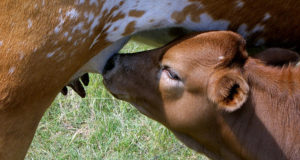
The recent case of Asda Stores Ltd v Wandsworth London Borough Council [2007,] concerned the interpretation of a number of provisions in the Food Safety (General Food Hygiene) Regulations 1995 (“the Regulations”), which implemented Council Directive (EC) 93/43.
The claimant was charged with a number of offences pursuant to the Regulations. The charges were brought following the sighting by a customer of a mouse chewing on a piece of confectionery and the subsequent sighting by environmental health officers of mouse droppings in the claimant’s premises. The environmental health officers had been dispatched by Wandsworth London Borough Council.
At the South Western Magistrates’ Court, the claimant made a submission of ‘double charging’ in respect of charges 3 and 4, which is when two charges against a party are effectively the same. Wansdworth London Borough Council, in laying charge 3, alleged that the claimant had failed to ensure adequate procedures were in place so that pests were controlled. In laying charge 4 they alleged that the claimant had failed to minimise the risk of contamination from the activities of such pests. The court rejected the submission, and the claimant pleaded guilty to the charges.
The matter was thereafter committed to the Crown Court for sentencing. Sentencing was then adjourned, pending the outcome of the claimant’s instant appeal. The appeal is the subject matter of this case.
The issue which fell to be considered at appeal was whether the words in Paragraph 3 of Chapter IX of Schedule 1 to the Regulations created separate offences, or whether those words created one offence. If the words were held to have created one offence the claimant would be deemed to have been the subject of double charging, and accordingly put at risk of being punished twice for effectively the same offence.
Regulation 4 of the Regulations, so far as relevant, provides:
‘(1)… A proprietor of a food business shall ensure that any of the following operations, namely, the preparation, processing, manufacturing, packaging, storing, transportation, distribution, handling and offering for sale or supply, of food are carried out in a hygienic way. (2) A proprietor of a food business shall ensure that… (d) the requirements set out in Chapters IV to X of Schedule 1 are complied with as respects that business’.
Regulation 6 provides:
‘(1)… If any person contravenes regulation 4 (including any provision of Schedule 1) or 5, he shall be guilty of an offence against these Regulations. (2) Any person guilty of an offence against these Regulations shall be liable… (a) on summary conviction, to a fine not exceeding the statutory maximum; (b) on conviction on indictment, to a fine or imprisonment for a term not exceeding two years or both’.
Paragraph 3 of Chapter IX of Schedule 1 to the Regulations provides:
‘All food which is handled, stored, packaged, displayed and transported, shall be protected against any contamination likely to render the food unfit for human consumption, injurious to health or contaminated in such a way that it would be unreasonable to expect it to be consumed in that state. In particular, food must be so placed and/or protected as to minimize any risk of contamination. Adequate procedures must be in place to ensure pests are controlled’.
The appeal was dismissed. The court held that:-
– On its true construction, Paragraph 3 of Chapter IX of Schedule 1 to the Regulations created more than one offence.
– Council Directive (EC) 93/43 which had been implemented by the Regulations had been directly transposed into domestic legislation.
– No modification of the wording had occurred and therefore that had been the cause of the unusual drafting style of Paragraph 3 of Chapter IX of Schedule 1 to the Regulations.
– Furthermore, Paragraphs 3 and 4 of Chapter I of Schedule 1 to the Regulations demonstrated that a single paragraph could contain more that one offence.
– In this case, the justices had therefore been correct to conclude that the claimant had not been subjected to ‘double charging’. It was held that charge 3 related to the single incident of the mouse found in the confectionery and charge 4 related to the inadequacy of procedures which might have spanned a much longer period of time.
If you require further information please contact us at enquiries@rtcoopers.com or Visit
© RT COOPERS, 2007. This Briefing Note does not provide a comprehensive or complete statement of the law relating to the issues discussed nor does it constitute legal advice. It is intended only to highlight general issues. Specialist legal advice should always be sought in relation to particular circumstances.

Source by Rosanna Cooper
 Vitamin Agent The Health & Naturalistic Source
Vitamin Agent The Health & Naturalistic Source





